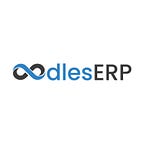Everything You Need To Know About ERPNext Pricing
ERP systems are essential in helping businesses navigate operational challenges and build resilience for future events. In today’s competitive business landscape, more enterprises are adopting ERP systems, with many planning to do so soon. While the ERP market is dominated by giants like SAP, Oracle, Salesforce, and HubSpot, many small and medium-sized enterprises (SMEs) often turn to open-source alternatives like ERPNext.
ERPNext is a popular open-source platform widely used by businesses worldwide for developing and implementing custom ERP solutions. It offers a wide range of features and customizable modules to meet diverse business needs. As companies consider implementing ERPNext, understanding its pricing model is crucial. This article delves into the key aspects of ERPNext pricing, including its model, components, and factors to consider.
Also, Read The Most Important ERPNext Modules For Business Process Management
ERPNext Pricing Model
ERPNext operates on a subscription-based pricing model where users pay only for the services they use. As an open-source platform, it doesn’t require a license fee. However, users must pay a regular fee to access the software and its various features. Unlike traditional licensing models with hefty upfront costs, ERPNext’s subscription-based approach is designed to be cost-effective and flexible for businesses of all sizes.
Components of ERPNext Pricing
Understanding the components of ERPNext pricing helps clarify its actual cost structure. Here are the key elements:
User Licenses
ERPNext pricing is based on the number of licenses required by an organization. Each license provides access to the ERPNext platform and its functionalities. These licenses are categorized based on user roles and responsibilities, such as regular users, power users, and administrators.
Modules and Features
ERPNext offers a wide array of modules and features catering to various business needs, including sales, finance, inventory, CRM, and HRM. Businesses can add new features or modules to their subscription plans as needed, allowing them to customize their ERPNext application according to their operational requirements.
Support and Upgrades
Subscribers receive regular software updates and technical support based on their subscription plans. This ensures the system remains up-to-date and any software issues are promptly addressed. The level of support and frequency of updates vary depending on the subscription tier selected.
Also, Read ERPNext Software Solutions For Improved Marketing Automation
Factors Affecting ERPNext Pricing
Several factors influence the pricing of an ERPNext application or module. Here are the top considerations:
Number of Users
The primary factor affecting ERPNext pricing is the number of user licenses required. The subscription cost increases with the number of users, making it crucial to accurately identify the number of users to avoid overspending on unnecessary licenses.
Modules and Features
The selection of modules and features for your ERPNext implementation impacts the overall cost. If your business needs specialized functionalities, additional modules may be necessary, increasing the subscription cost. It’s essential to evaluate which modules align with your business processes to avoid unnecessary expenses.
Deployment Type
ERPNext offers both cloud-based and on-premise deployment options. Cloud-based deployment involves hosting the ERP application on external servers, typically with lower upfront costs but potentially higher long-term subscription fees. On-premise deployment involves hosting on the organization’s servers, requiring higher upfront costs but offering controlled capital expenditure over time.
Subscription Tier
ERPNext provides different subscription tiers, each offering varying levels of features and pricing schemes. Businesses should choose a plan that aligns with their needs and budget while carefully assessing the features included in each tier to maximize value.
You may also like to read ERPNext Software Development For Real Estate Management
Contract Length
The length of your subscription contract can also affect overall pricing. ERPNext may offer discounts for longer contracts, such as annual or multi-year subscriptions, which might be cheaper than monthly plans. However, it’s crucial to ensure the software meets all your requirements and offers flexibility for business growth before committing to a long-term contract.
Conclusion
ERPNext is a versatile and comprehensive ERP solution designed to streamline and optimize various business operations. Understanding its pricing structure is essential for making an informed decision when integrating ERPNext into your organization. By carefully evaluating factors like the number of users, required modules and features, deployment type, subscription tier, and contract length, you can select the most suitable pricing plan for your business. ERPNext’s subscription-based model provides flexibility and scalability, ensuring the software adapts to your changing needs over time.
We, at Oodles, provide end-to-end ERP application development services to help enterprises steer clear of their routine operational challenges. Our seasoned developers specialize in using the latest tech stack and open-source platforms like Odoo and ERPNext to build next-gen enterprise solutions. To learn more about our ERPNext software development services, drop us a line at erp@oodles.io.
